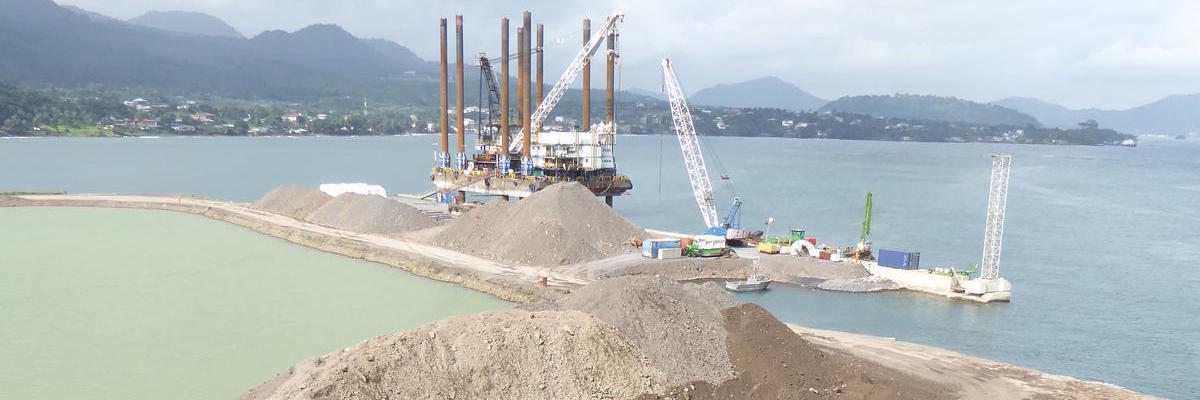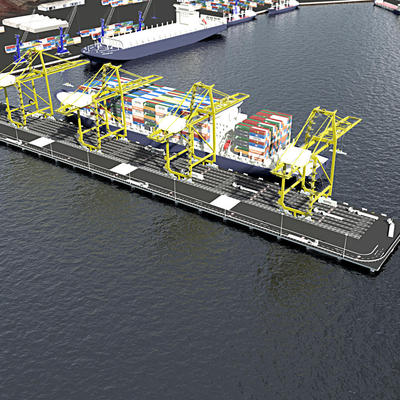
Container Terminals in West Africa
Evaluation of options for the extension of the Port of Luanda in Angola
The possibilities for the expansion of this port are limited, since new quay walls cannot be built parallel to the waterfront. For this reason, alternative options were examined for extending the port with structures oriented perpendicular to the waterfront. These included structures built by various construction methods, including cofferdams, column-supported pier slabs, caissons and floating structures.
Preferred option: Considering the facility’s planned temporary nature and the associated concession period, the floating option was concluded to present the best solution. This comprises a semi-submersible steel floating platform with a total length of 400 m, a width of 60 m and a height of 10.55 m. The platform was designed to accommodate four large container cranes and for the docking of container ships of capacity up to 130,000 DWT. The structure consists of a lower buoyancy part with a height of 4.3 m, in which the machinery and pump rooms for ballasting are housed, and the 1m-high upper part with an orthotropic deck slab. These parts are connected together by columns of height 4.6 m. The structure is anchored to the ground by means of tension elements which allow vertical movements due to tidal effects. These tension elements are also designed to withstand horizontal loads.
BIM modelling: The project’s 3D modelling was done in 2015 using Autodesk Revit software. Although Revit is a powerful program that can be used in all areas of construction, the internal BIM structure library was highly building-oriented at the time. This fact, together with the proposed structure’s unique design, meant that almost all the individual parts that made up the project‘s 3D model had to be specially designed. The valuable experience gained from using Revit on this project served as the basis for the ongoing development and use of BIM in our work in the field of hydraulic construction engineering.

